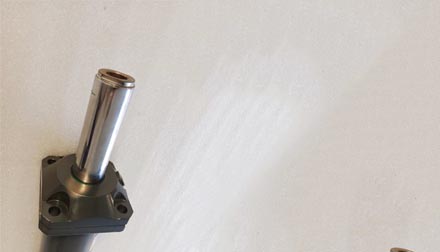Oct . 18, 2024 09:09 Back to list
Exploring Innovative Underwater Hydraulic Cylinder Solutions for Enhanced Performance and Reliability
The Importance of Underwater Hydraulic Cylinder Products in Marine Engineering
Underwater hydraulic cylinders are essential components in marine engineering, playing a crucial role in various applications ranging from underwater construction to deep-sea exploration. As the demand for underwater activities continues to grow, the development and refinement of hydraulic cylinders designed specifically for underwater use have become a vital area of focus for engineers and manufacturers alike.
Understanding Underwater Hydraulic Cylinders
Hydraulic cylinders operate by utilizing pressurized fluid to produce motion and force. When designed for underwater environments, these cylinders must withstand unique challenges such as high pressures, corrosive saltwater, and sediment. Typically constructed from robust materials like stainless steel or specially coated alloys, underwater hydraulic cylinders are engineered to resist corrosion and maintain performance under extreme conditions.
Applications in Marine Engineering
The applications of underwater hydraulic cylinders are diverse
1. Subsea Construction In the construction of oil rigs, pipelines, and underwater renewable energy sources, hydraulic cylinders facilitate the installation of heavy components. They provide the necessary force to position and secure equipment, ensuring stability and safety.
2. ROVs and AUVs Remotely Operated Vehicles (ROVs) and Autonomous Underwater Vehicles (AUVs) are equipped with hydraulic systems that include cylinders for maneuverability and operational flexibility. These machines are fundamental in exploration, inspection, and maintenance activities in deep-sea environments.
3. Shipbuilding and Repair During the construction and maintenance of ships and submarines, hydraulic cylinders are employed in various tasks such as hull assembly and component positioning. Their precision and strength enable shipbuilders to accomplish intricate and heavy-duty tasks efficiently.
underwater hydraulic cylinder products

4. Marine Research Underwater hydraulic cylinders play a pivotal role in the deployment of instruments and tools used in marine research. They help in the collection of data on oceanography, marine biology, and environmental monitoring crucial for understanding our oceans.
Key Features and Innovations
The design of underwater hydraulic cylinders has seen significant innovations aimed at enhancing performance and reliability. Some key features include
- Pressure Resistance Advanced testing methods ensure that these cylinders can withstand high hydrostatic pressures found at great depths. This resilience is crucial for maintaining the integrity and functionality of the equipment.
- Corrosion Resistance The use of advanced coatings and materials minimizes the risk of corrosion, thereby extending the lifespan of hydraulic cylinders submerged in harsh marine environments.
- Compact Design Engineering advancements have led to more compact cylinder designs that do not compromise power or efficiency. These designs are essential for operations in confined underwater spaces.
- Sealing Technology Innovations in sealing technology prevent leakage of hydraulic fluid, which is vital not only for the efficiency of the system but also for environmental safety.
Conclusion
Underwater hydraulic cylinder products are indispensable in the realm of marine engineering. Their unique designs and robust capabilities allow for a wide array of applications that support critical underwater operations. As technology continues to advance, the future of underwater hydraulic systems holds promise for increased efficiency, enhanced performance, and improved environmental sustainability. The ongoing investment in research and development will drive the evolution of these products, ensuring they meet the demanding challenges presented by our oceans while contributing significantly to marine engineering's growth and innovation.
-
Fork Lift Power Units - Hebei Shenghan | Efficiency, Reliability
NewsJul.13,2025
-
1.5-Ton Turbocharged Cylinder-Hebei Shenghan|Hydraulic Solution,Energy Efficiency
NewsJul.13,2025
-
Auto Hoist Power Units-Hebei Shenghan|Efficiency&Industrial Lifting
NewsJul.13,2025
-
Double Acting Power Units-Hebei Shenghan|Hydraulic Solutions,Industrial Efficiency
NewsJul.13,2025
-
1.5 Ton Lifting Cylinder 70/82-40-290-535 - High-Performance Hydraulic Solution | Hebei Shenghan
NewsJul.13,2025
-
Fork Lift Power Units - Hebei Shenghan | Efficiency&Reliability
NewsJul.13,2025
